What is the way to grow business in the digital era? Adapt and adopt the best and the newest. Many manufacturers and enterprises have already stepped into the age of Industry 4.0: “smart factories” with cyber-physical systems, the Internet of things, cloud computing, etc. Implementation of Augmented Reality in manufacturing is going to assist production lines as well. This technology, in pairing with VR, is growing, from $5B in 2016 up to $29.5B in 2019, according to Statista.
There are three main realizations of AR in manufacturing:
- Head-mounted displays – for training and hands-free work;
- Handheld displays – for AR applications to provide real-time data;
- Spatial displays – to project virtual objects into the environment to assist product design.
Plus, there is a great potential in the heavy industry of the smart helmet, which combines protection and functionality. In 2016, the first one was created by the company DAQRI. It is operated by Intel processor, has multiple cameras (high-resolution, low-resolution and infrared) and gives the opportunity for 4D work instruction, thermal vision, and remote support. The usefulness of this device is almost endless.
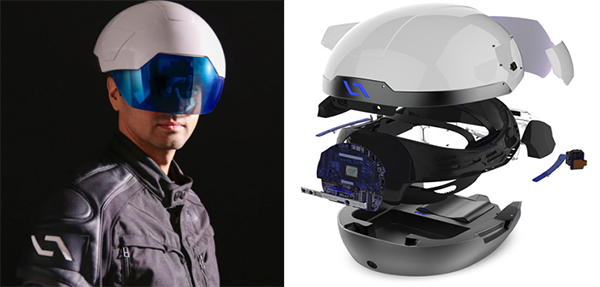
Smart helmet by DAQRI
To understand the whole potential of AR in the manufacturing industry, let’s see the product life-cycle with using this leading technology.
Let's Build Your AR app
Provide us with your contact details and we will contact you today
Thank you for feedback.
Product Design
Augmented reality can be used in designing cars or planes, or any other product, which has difficult construction. And under the word “design” means not only the aesthetic side. What is more important, AR models help to estimate the functionality of the design and can be used to optimize it. The main pros of AR are:
- Better feedback. AR gives the opportunity to connect designed objects with the physical products. It provides both visual and digital data, which help to improve design itself.
- Better preview. Before the era of AR, constructors had to do multiple runs of product prototypes. Now, with the help of AR, they get the unrestricted view and can cut mockups costs.
- Detailed models. 3D models in association with AR give the opportunity to see a clear look the future product without overlapping the program interface, not limited by the computer screen.
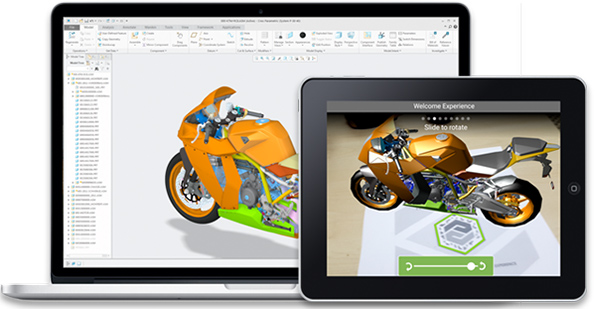
Image by Creo
Manufacturing
Let me divide this stage into two vital part: assembly and training or, in other words, tools and people.
Complex assembly. First, there was only workers and handle tools and long work under one individual product. Then Henry Ford came with his idea of the conveyor line and the speed of production assembly significantly increased. Now in many cases, it is fully automatic, and in some areas live staff is still irreplaceable.
Augmented reality applications will provide the workers with visual displaying of the parts and details to assemble, information about the necessary instruments for every stage. They may highlight the finished pieces, give the whole 3D instruction. And what is even more important, AR devices like smart glasses enables hands-free work.
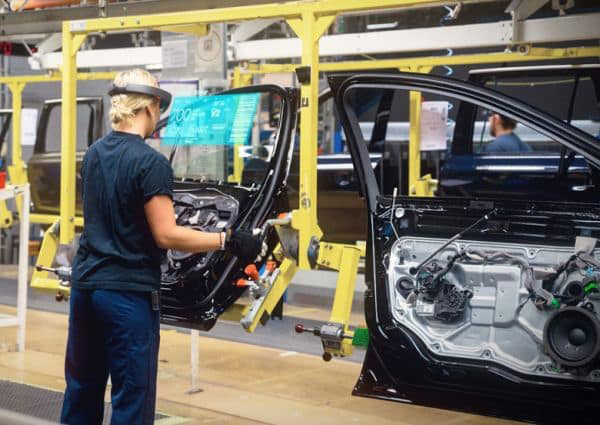
Volvo line with AR based on Hololens.
Training. Each new product or improvement of an old one is accompanied by the instruction to assembly. AR applications can be used for both to train the new workers and to help experienced employees to cope with new instructions.
AR training in production helps:
- cut the time of preparing the new workers;
- increase the quality of work due to each employee has all the necessary information in his hand;
- prevent the failures.
One of the examples of AR implementation into employees training process is collaboration Jaguar Land Rover with Bosh and RE’FLECT. The application gives the free space to observe everything behind the dashboard without removing it.
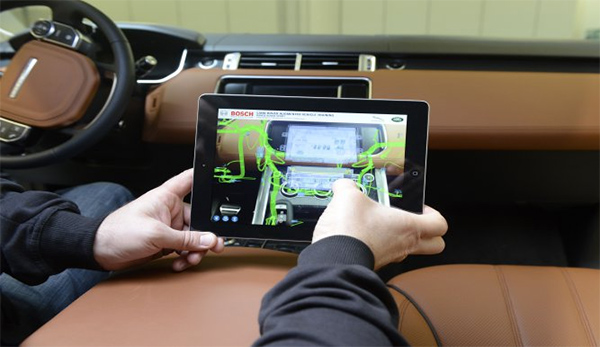
Image by Re’Flect
Quality control
Augmented reality in manufacturing s going to help to improve the quality too. From time to time, the market has to deal with product returns, which, of course, means huge losses. Augmented reality in the quality control in the first place brings these risks down. It can diagnose each stage of the working process.
A nice example is by Porsche, who upgraded factories in Leipzig and Zuffenhausen and called it Porsche Production 4.0. Earlier than anyone else, in 2011, Airbus started to use the QA tool with AR – Smart Augmented Reality Tool (SART). Since then, SART has been installed on about a hundred tablets and over 1,000 employees use it daily.
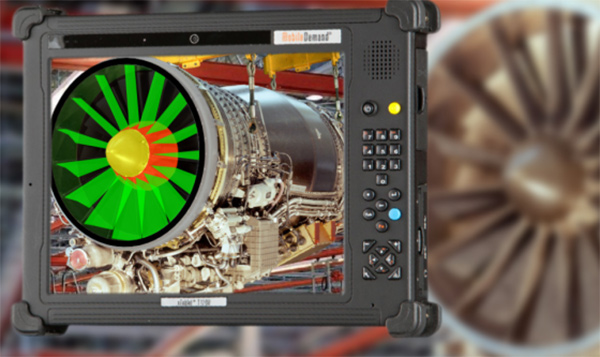
AR in aerospace
Maintenance
Any maintenance is all about speed and accuracy. Besides said production stages, augmented reality in manufacturing can assist the maintenance of equipment. For example, Mitsubishi Electric created maintenance-support AR technology, which confirms the order of review on AR display.
ThyssenKrupp has already changed the classic look of the maintenance. Using Hololens from Microsoft, they created the predictive supply service for elevators – MAX. This utility helps service workers to visualize and identify problems with elevators, gives hands-free access to technical information.
How does act AR during the maintenance:
- aid the mechanic’s real view with the text, arrows, and animations;
- labeling of components;
- real-time diagnostic data;
- gesture tracking;
- safety warnings;
- allows off-site collaboration.
Main benefits of AR devices during the maintenance and repair:
- both hands are free;
- greater accuracy;
- overlaying the dynamic instructions onto the real product.
Benefits of Augmented Reality in manufacturing
- Increase in production
The main goal of applying new technologies to the production is to get a higher number of the final product. With the help of augmented reality technologies, this goal is easily achieved. AR glasses overlays the information how should concrete details and components be assembled. This obtains through the using of cameras, depth and motion sensors. After applying the AR, factories and plants can observe the increase the speed of work by 30%. And, accordingly, it will increase the production figures.
- Cut the costs
Augmented reality help to reduce the costs by preventing errors. The quality control with use of AR will give more accurate results and prevent any further expenses. Remember, when in 2016 Samsung had to recall all the sold Galaxy Note 7. It cost the company a huge money and threw a shadow on the reputation. But the situation like this in the future will be almost impossible with AR control.
Reduce production downtime and improve the quality with AR. Augmented reality improves not only the quality of the final product but the whole manufacture process, qualification of the employees and maintenance.
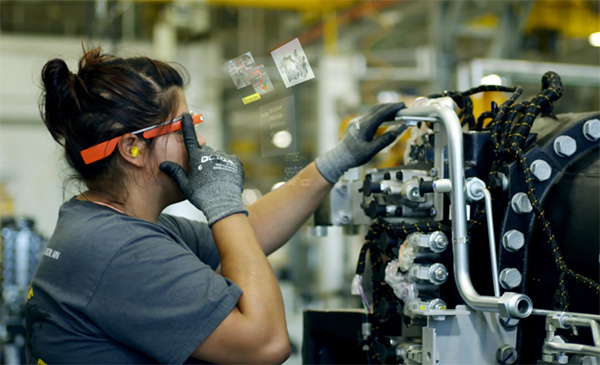
Image by AGCO
As we can see, the potential of augmented reality in manufacturing is extensive. We can apply various AR tools during the whole product life-cycle. The technology is cost beneficial, scalable and worth trying out in any kind of production today.
Let's Build Your AR app
Provide us with your contact details and we will contact you today
Thank you for feedback.
Read more: 20 best AVR development companies

